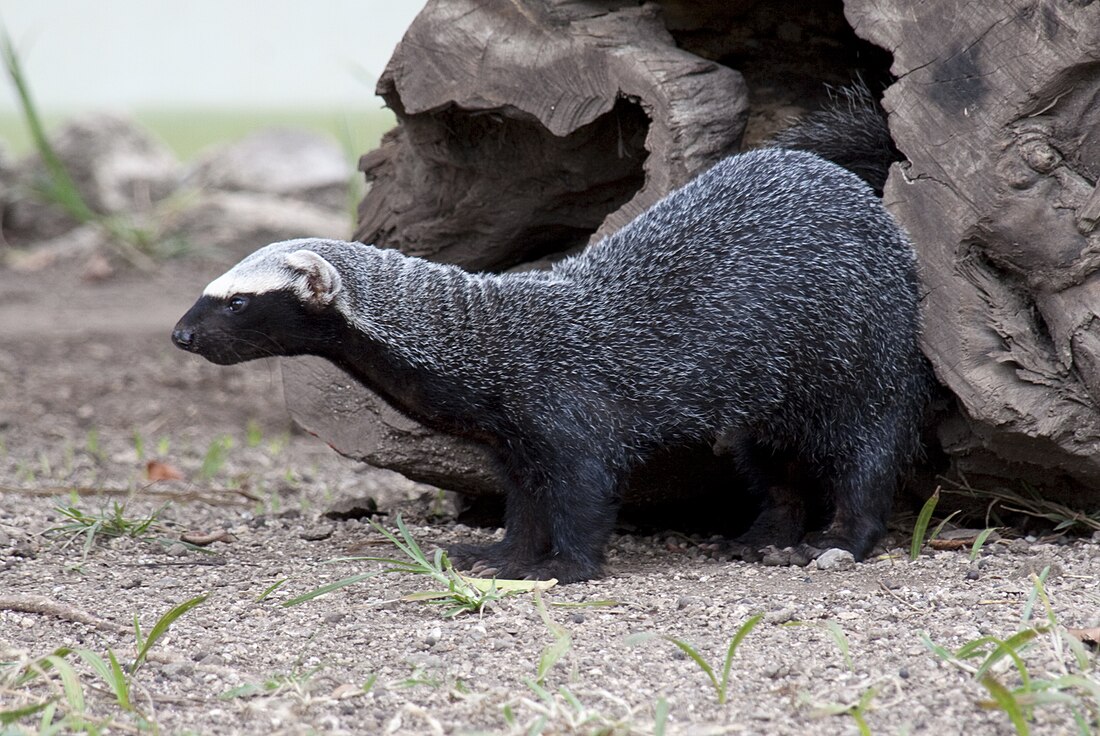Ictonychinae is a subfamily of the mammal family Mustelidae found mainly in the Neotropics (three species) and Africa (three species), with one Eurasian member. It includes the grisons, Patagonian weasel, striped polecats, African striped weasel, and marbled polecat.[2][3] These genera were formerly included within a paraphyletic definition of the mustelid subfamily Mustelinae.[4]
| Ictonychinae | |
|---|---|
 | |
| Greater grison (Galictis vittata) | |
| Scientific classification | |
| Domain: | Eukaryota |
| Kingdom: | Animalia |
| Phylum: | Chordata |
| Class: | Mammalia |
| Order: | Carnivora |
| Family: | Mustelidae |
| Subfamily: | Ictonychinae Pocock, 1921[1] |
| Genera | |
| Synonyms | |
| |
Most members have a mask-like bar or larger dark marking across their faces; the African representatives of the group are striped. A defense mechanism common to the group is use of a chemical spray similar to (but not necessarily as strong as) that of skunks.
Species
Subfamily Ictonychinae
| Tribe | Image | Genus | Living Species |
|---|---|---|---|
| Ictonychini |  | Ictonyx Kaup, 1835 |
|
 | Poecilogale Thomas, 1883 |
| |
 | Vormela Blasius, 1884 |
| |
| Lyncodontini |  | Lyncodon Gervais, 1845 |
|
 | Galictis Bell, 1826 |
| |
Fossil genera
- Cernictis
- Enhydrictis
- Martellictis
- Lutravus
- Oriensictis
- Pannonictis
- Sminthosinis
- Stipanicicia
- Trigonictis
- Trochictis
References
External links
Wikiwand in your browser!
Seamless Wikipedia browsing. On steroids.
Every time you click a link to Wikipedia, Wiktionary or Wikiquote in your browser's search results, it will show the modern Wikiwand interface.
Wikiwand extension is a five stars, simple, with minimum permission required to keep your browsing private, safe and transparent.
